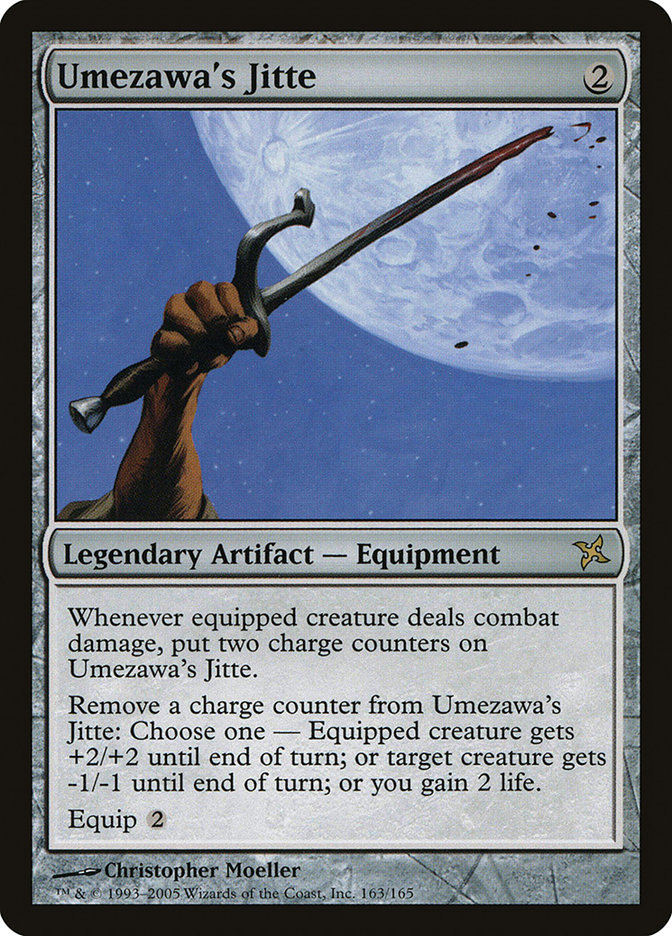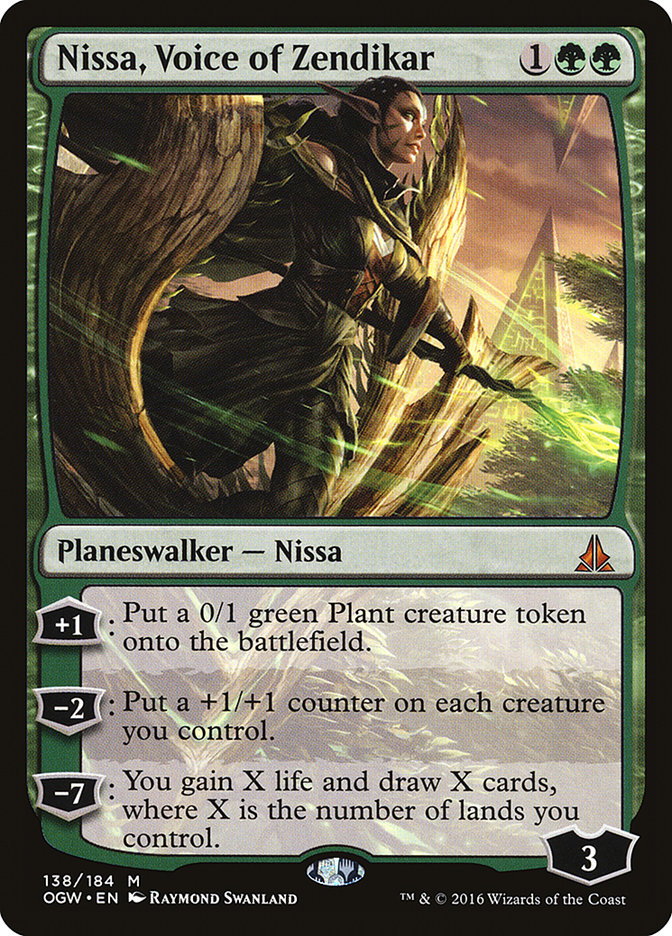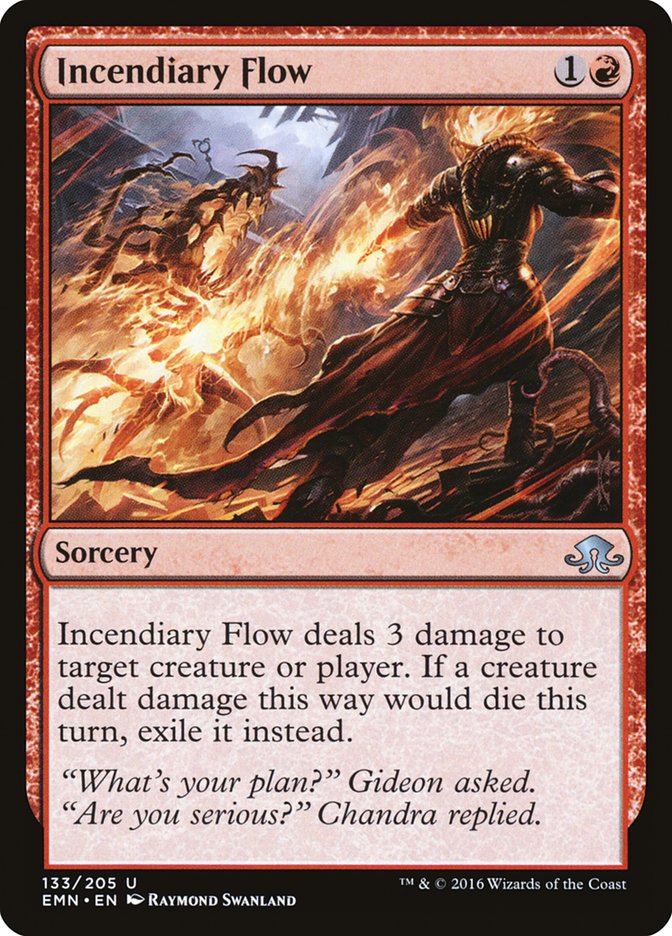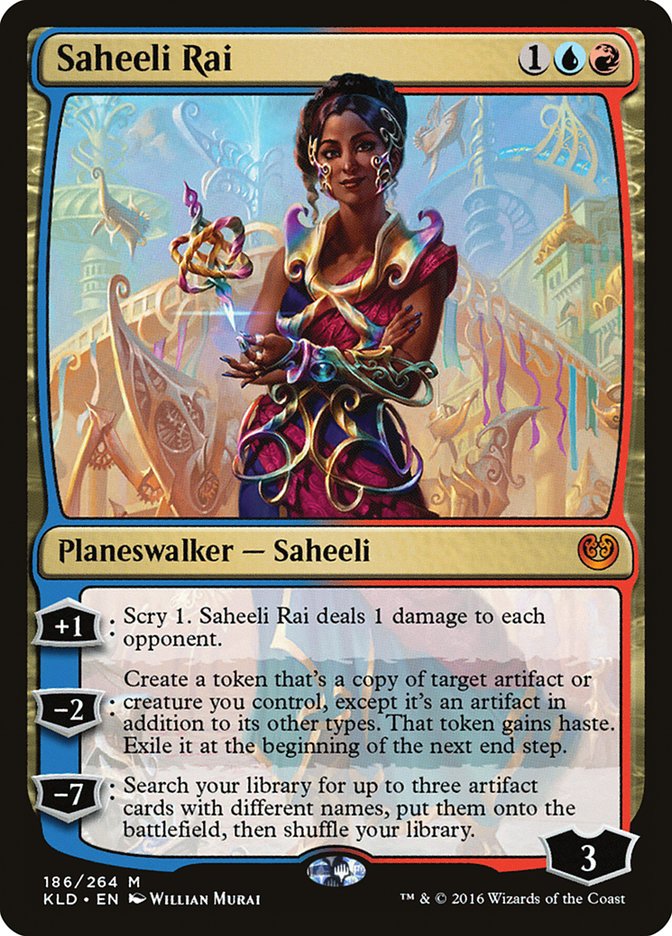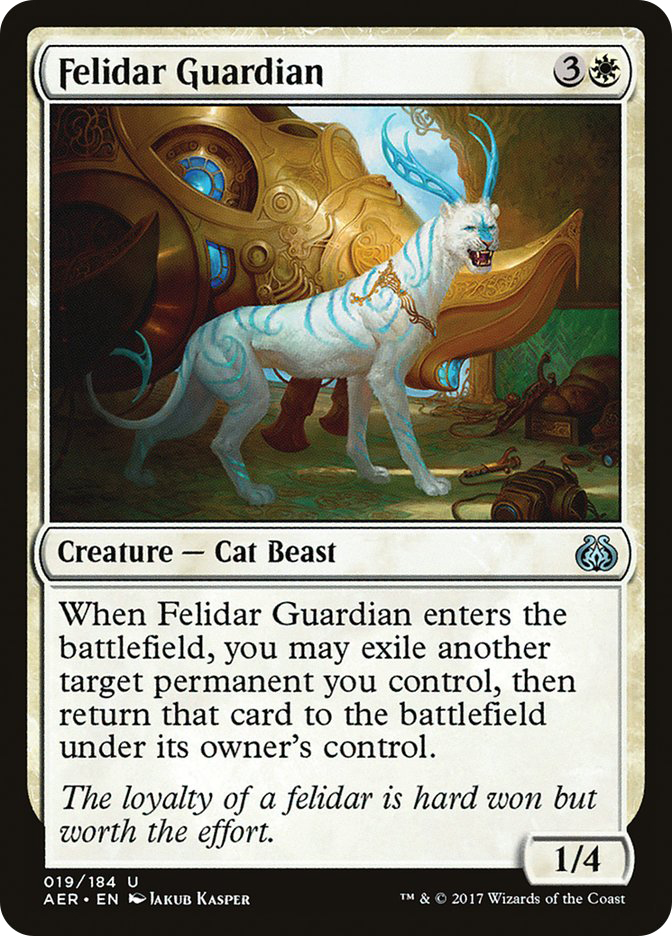The Promised End, indeed.
Unless you’ve been living under a Wall of Granite for the last few days, you know the news.
It’s been six years since a card has been banned in Standard, but here we are.
I think people expected the Emrakul, the Promised End banning, but the rest of it is quite a lot to take in. I’m not going to spend any time discussing the philosophy of if/why we should ban cards in Standard and the ramifications of doing so because that’s already been discussed ad nauseam. It is fun to discuss from a talking points standpoint, but the truth of the matter was summed up very nicely by SCG Tour grinder Eric Hawkins on Twitter:
I have no control over what is or isn’t banned. I love to play #MTG and will continue playing with or against whatever is legal.
— Eric Hawkins (@conanhawk) January 9, 2017
I couldn’t have said it better myself Eric, and I appreciate seeing a rational and positive sentiment on Twitter. What I’m interested in is how these changes are going to affect Standard going forward. Today we are going to look at why each card was banned, what immediate effect it has, and how it will impact the format going forward.
Like Fight Club, let’s begin at the end.
Aside—Wow, so many of my favorite movies begin with the ending! Of this of list of movies that start at the ending, there are six of my favorites. Care to guess?
“Emrakul, the Promised End is banned.”
Which End? The Promised End, of course, and she sure delivered on her promise.
Why it was banned:
Emrakul, the Promised End is an awesome and flavorful card. You literally lose your mind and then are left having to try to pick up the pieces. Even the fear of Emrakul looming forces you to make bizarre plays in order not to get completely ruined when she arrives. The problem isn’t necessarily Emrakul, but the cards around her that make her so oppressive.
With so many good delirium enablers, getting her down to seven or even six mana happens fairly frequently, but the biggest issue is the repeatability. In B/G Delirium, you have Grapple with the Past; Liliana, the Last Hope; and Traverse the Ulvenwald to ensure that The Promised End comes over and over again until it is enough. With Aetherworks Marvel, you spin the wheel almost every turn until you’ve cast enough Emrakuls to win the game.
If Emrakul, the Promised End only happened once in a while, I don’t think she would be an issue at all, but this sort of consistency and repeatability simply defined the end-game of the format. The end-game was Emrakul, the Promised End, and nothing else could really go over or under her.
What immediate effect it has:
The various flavors of Aetherworks Marvel and B/G Delirium were the two major Emrakul, the Promised End decks, and naturally both will need to change significantly if they are going to survive in the post-banning world.
Until Logan Nettles (aka Jaberwocki) broke the deck in half by introducing a worse-than-delirium-but-still-reasonable fair plan into the deck, Aetherworks Marvel was just a clunky combo deck that was likely to draw more ten- and thirteen-drops in its opening hand than lands. Without Emrakul, the Promised End, it will have to return to being a combo or bust deck if it is going to survive. Ulamog, the Ceaseless Hunger still exists and is still a card you don’t want to see cast on turn 4.
B/G Delirium was once top dog in the format until it was pushed out by the Aetherworks Marvel decks. Their main advantage? They were better Emrakul, the Promised End decks than B/G Delirium. With Emrakul out of the picture, B/G Delirium’s plan has to change. The previous plan of removal spells and delirium enablers into Ishkanah, Grafwidow into Emrakul, the Promised End is no longer legal, and without the ultimate end-game, the deck must focus on a different win condition.
Creatures (21)
- 4 Catacomb Sifter
- 3 Kalitas, Traitor of Ghet
- 2 Gnarlwood Dryad
- 4 Grim Flayer
- 4 Verdurous Gearhulk
- 4 Servant of the Conduit
Planeswalkers (1)
Lands (24)
Spells (14)

Something like what Todd Anderson and Brad Nelson played at the Players’ Championship is likely the future of B/G Delirium.
How it impacts the format going forward:
The banning of Emrakul, the Promised End in Standard really changes everything.
Previously, no other end-game card really had a chance. Nothing could go over the top of Emrakul, the Promised End, so big end-game cards like Sorin, Grim Nemesis and the like just couldn’t compete. Very often, these big finishers not only couldn’t hold a candle to Emrakul, the Promised End as a finisher, but were also devastating to have access to when your turn was controlled by Emrakul. The banning of Emrakul allows these cards back into the format. Instead of being unrestricted by color like Emrakul, each of these finishers will find their way into different decks at different times.
No Emrakul also means that counterspell-based control decks will also have a chance to reenter the format. Making a game go long with counterspells and other control elements was almost impossible with Emrakul looming, but now that strategy is freed up as well. Torrential Gearhulk is still a very powerful Magic card.
“Smuggler’s Copter is banned.”
While a little less expected, banning Smuggler’s Copter makes a lot of sense.
Why it was banned:
It’s really fairly simple. Standard was essentially made up of two kinds of decks: Emrakul, the Promised End decks and Smuggler’s Copter decks. In fact, thirteen of the sixteen Standard decks at the Players’ Championship contained at least one of these cards, with the outliers being anti-Aetherworks Marvel metagame decks and Jeff Hoogland. G/B Aggro, Esper Aggro, Mardu Vehicles, Jeskai Midrange… even Humans!
Smuggler’s Copter doesn’t even mesh well in the Humans deck!
The issue is that Smuggler’s Copter is just too good not to play, and too easy to play in almost anything. Does this remind anyone of another two-mana artifact that got played in almost every deck?
Smuggler’s Copter doesn’t have quite the same impact on a game as Umezawa’s Jitte, but the principle remains the same. It’s an absurdly powerful two-mana artifact that plays well with creatures and goes into almost any deck that wants to play creatures. If you’re playing creatures in your deck, you’re playing four copies of Smuggler’s Copter as well, and that is a constrictive factor in Standard deckbuilding.
Good formats have variety, and Smuggler’s Copter offers only homogeneousness.
What immediate effect it has:
The biggest loser from the Smuggler’s Copter banning is all versions of the Vehicles decks. While there are certainly some powerful and interesting vehicles in Aether Revolt, none of them come close to offering the power and efficiency of Smuggler’s Copter.
This means Vehicle synergy cards like Depala, Pilot Exemplar and Veteran Motorist lose a lot of their luster. Decks looking to employ Toolcraft Exemplar are going to need to find another cheap artifact, and Thraben Inspector goes from being one of the best cards in the format to “just” really, really good.
W/U Flash, Jeskai Midrange, and other less aggressive decks are also going to need a new tool to fill in the early parts of their mana curve. B/G Aggro can just slot in another creature, as Smuggler’s Copter was good in that deck but not nearly as important, given the number of good options they have at one and two mana.
How it impacts the format going forward:
The loss of Smuggler’s Copter has two major impacts on new Standard.
Planeswalkers get a lot better, as the no longer have to contend with a 3/3 flyer that they can’t interact with and that is hard to block. Nissa, Voice of Zendikar was a major player before Smuggler’s Copter arrived and I would not be surprised to see her rise again.
Previously, every removal spell in the format had to be judged by how well it interacted with Smuggler’s Copter. Cards like Incendiary Flow, Declaration in Stone, and Ruinous Path are all good cards for their rate but are completely ineffective against Vehicles. With the most ubiquitous vehicle leaving the format, they all become much more viable options.
Decks will also be able to push their themes a bit more, as they will not be immediately locked in to playing four cards regardless of how well they fit.
“Reflector Mage is banned.”
Ahh, yes… the big surprise.
Why it was banned:
By far the most discussed card of the bannings, Reflector Mage feels a bit odd. Wasn’t Gideon, Ally of Zendikar the third pillar of the format? Upon further reflection, however, the banning of Reflector Mage begins to make a good amount of sense once you consider the format we are moving into rather the one that existed previously.
With B/G Delirium, Aetherworks decks, and Vehicles all getting nerfed, W/U Flash looks to loom over all once again. Banning Reflector Mage is a way to target W/U Flash specifically while still allowing other white decks access to Gideon, Ally of Zendikar.
More important than that, however, is how good Reflector Mage would have been in the new Saheeli Rai/Felidar Guardian combo deck. Reflector Mage works excellently with both cards in a fair manner, and would be quite the roadblock for any aggressive deck trying to deal lethal damage before the combo hits.
Once these factors are in play, the banning makes a lot more sense.
What immediate effect it has:
W/U Flash has some holes to fill. Losing both Smuggler’s Copter and Reflector Mage is going to alter the deck in a pretty big way, as both were great aggressive tempo cards that operated at sorcery speed. It is likely the deck will either get more flash-oriented, or have to go lower to the ground and get more effective.
Losing Reflector Mage is also a pretty big hit to Esper Aggro and Humans, as it allowed both decks to maintain a high threat count without by not playing that many dedicated removal spells. Humans in particular has almost no reason to be blue anymore, opening up other splash colors as options.
How it impacts the format going forward:
The loss of Reflector Mage is going to have a pretty big impact on Standard. We’ve been trained for the last year that playing creatures that cost four or more mana and don’t affect the battlefield is just asking to get blown out by Reflector Mage. Much like Flametongue Kavu back in the day, Reflector Mage is a major limiting factor to the playable creatures in the format. There’s a laundry list of creatures that have been held in check for a long time now, and they are now free from under Reflector Mage’s shadow.
The other big gain from the loss of Reflector Mage is that aggressive decks get a lot better. A Reflector Mage on the play bouncing a two-drop and invalidating a one-drop has stunted many aggressive starts over the last year, and without the tempo swing that Reflector Mage often provided, maybe we will actually see a red aggressive deck pop up again.
It’s A Whole New World
It is very rare we get a format as fresh as Aether Revolt Standard is going to be.
Typically we get a new set and work to understand it in the context of the format we already know. But with these bannings, the format we know doesn’t exist anymore! It would take months to fully flesh out our current Standard format with these bannings, but now we have a whole new set to take into account too.
A new Splinter Twin combo, a new set, and a Standard format in complete upheaval? #SCGCOL one week away?
Pro Tour Aether Revolt is going to be one hell of a PT… I can’t wait!





